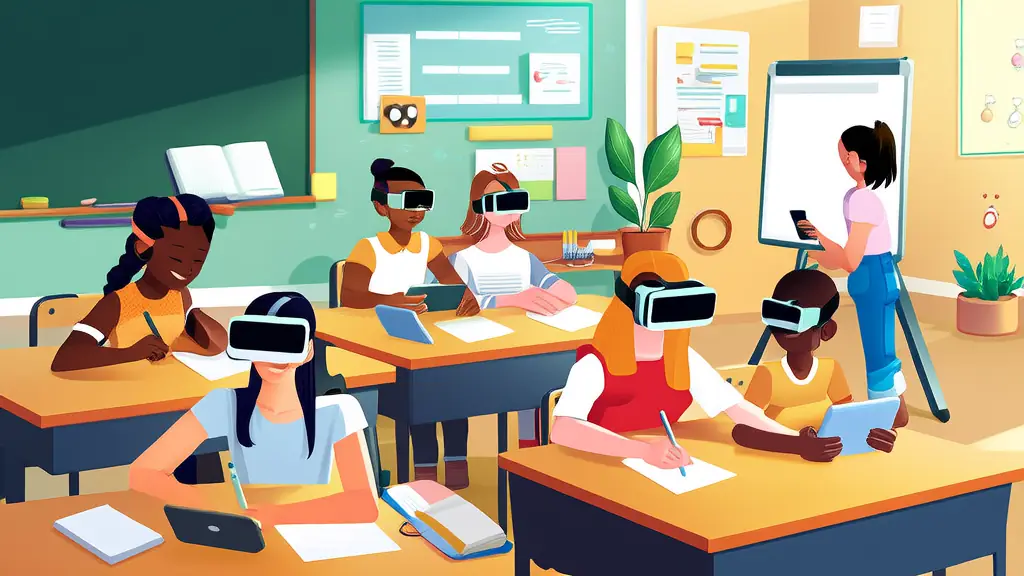
Empowering the Future: Navigating K-12 Education in 2025
Welcome to our exploration of the dynamic world of K-12 education, where we dive into the latest trends, methodologies, and insights that are shaping the future of learning. As we stand on the cusp of a new era in education, it's more important than ever for parents and educators to stay informed and engaged. This post will guide you through the most impactful developments in teaching, child development, and technology, providing practical tips and inspiring success stories along the way.
Latest Teaching Methodologies and Their Effectiveness
The landscape of K-12 education is continually evolving, with innovative teaching methodologies emerging to better meet the diverse needs of students. One such approach is project-based learning (PBL), which encourages students to engage in real-world problem-solving. PBL not only enhances critical thinking and collaboration skills but also fosters a deeper understanding of subject matter. For example, a middle school class might work on a project to design a sustainable city, integrating knowledge from science, math, and social studies.
Another effective methodology is flipped classrooms. In this model, students review lectures and materials at home, allowing class time to be used for interactive activities, discussions, and hands-on learning. This approach has been shown to improve student engagement and performance, as it provides more opportunities for personalized instruction and feedback.
Child Development Insights and Research
Understanding child development is crucial for creating an effective learning environment. Recent research highlights the importance of social-emotional learning (SEL) in K-12 education. SEL programs help students develop self-awareness, self-management, social awareness, relationship skills, and responsible decision-making. Schools that integrate SEL into their curriculum have seen improvements in academic performance, reduced behavioral issues, and increased overall well-being among students.
Additionally, the concept of growth mindset—the belief that abilities and intelligence can be developed through dedication and hard work—has gained significant traction. Educators who foster a growth mindset in their students encourage resilience, perseverance, and a love for learning. This approach has been linked to higher levels of motivation and achievement across various subjects.
Educational Technology Trends
Technology continues to play a pivotal role in transforming K-12 education. Adaptive learning platforms use artificial intelligence to tailor educational content to each student's individual needs and pace. These platforms provide immediate feedback and adjust the difficulty level based on the student's progress, ensuring that every learner is challenged and supported appropriately.
Virtual and augmented reality (VR/AR) are also making waves in the classroom. These immersive technologies offer unique opportunities for experiential learning, allowing students to explore historical events, scientific phenomena, and cultural landmarks in a highly engaging and interactive way. For instance, a history lesson on ancient Egypt could be enhanced with a VR experience that transports students to the pyramids, providing a rich, multisensory learning experience.
Practical Tips for Parents and Teachers
For parents and teachers, staying connected and informed is key to supporting student success. Here are some actionable tips:
- Stay involved and communicate regularly: Regular communication between parents and teachers helps ensure that students receive consistent support both at home and in the classroom. Use tools like parent-teacher conferences, emails, and digital platforms to stay in touch.
- Encourage a balanced approach to technology: While educational technology offers many benefits, it's important to balance screen time with other activities. Encourage students to engage in physical exercise, creative hobbies, and social interactions to promote holistic development.
- Foster a growth mindset: Praise effort and persistence rather than innate ability. Encourage students to view challenges as opportunities for growth and to learn from mistakes. This mindset can lead to greater resilience and a lifelong love of learning.
Success Stories and Case Studies
Real-world examples can provide valuable insights and inspiration. The Summit Public Schools network, for instance, has successfully implemented a personalized learning model that combines online resources, project-based learning, and one-on-one mentoring. This approach has led to improved graduation rates and college readiness among their students.
In another case, the High Tech High charter schools in California have embraced a project-based learning model that integrates STEM (Science, Technology, Engineering, and Mathematics) and the arts. Their students have achieved impressive results, including high rates of college acceptance and strong community engagement.
Conclusion: A Call to Action
As we navigate the ever-evolving landscape of K-12 education, it's clear that the future is bright and full of possibilities. By embracing the latest teaching methodologies, staying informed about child development, leveraging educational technology, and fostering a supportive and engaged community, we can empower our students to reach their full potential. Let's continue to collaborate, innovate, and inspire the next generation of learners. Together, we can create a brighter future for all.